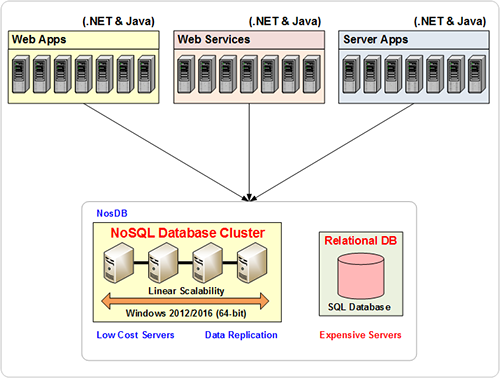NoSQL
A NoSQL (originally referring to "non SQL" or "non relational") database provides a mechanism for storage and retrieval of data that is modeled in means other than the tabular relations used in relational databases. Such databases have existed since the late 1960s, but did not obtain the "NoSQL" moniker until a surge of popularity in the early twenty-first century, triggered by the needs of Web 2.0 companies. NoSQL databases are increasingly used in big data and real-time web applications. NoSQL systems are also sometimes called "Not only SQL" to emphasize that they may support SQL-like query languages, or sit alongside SQL database in a polyglot persistence architecture. Motivations for this approach include: simplicity of design, simpler "horizontal" scaling to clusters of machines (which is a problem for relational databases), and finer control over availability. The data structures used by NoSQL databases (e.g. key-value, wide column, graph, or document) are different from those used by default in relational databases, making some operations faster in NoSQL. The particular suitability of a given NoSQL database depends on the problem it must solve. Sometimes the data structures used by NoSQL databases are also viewed as "more flexible" than relational database tables.Sample Architecture

